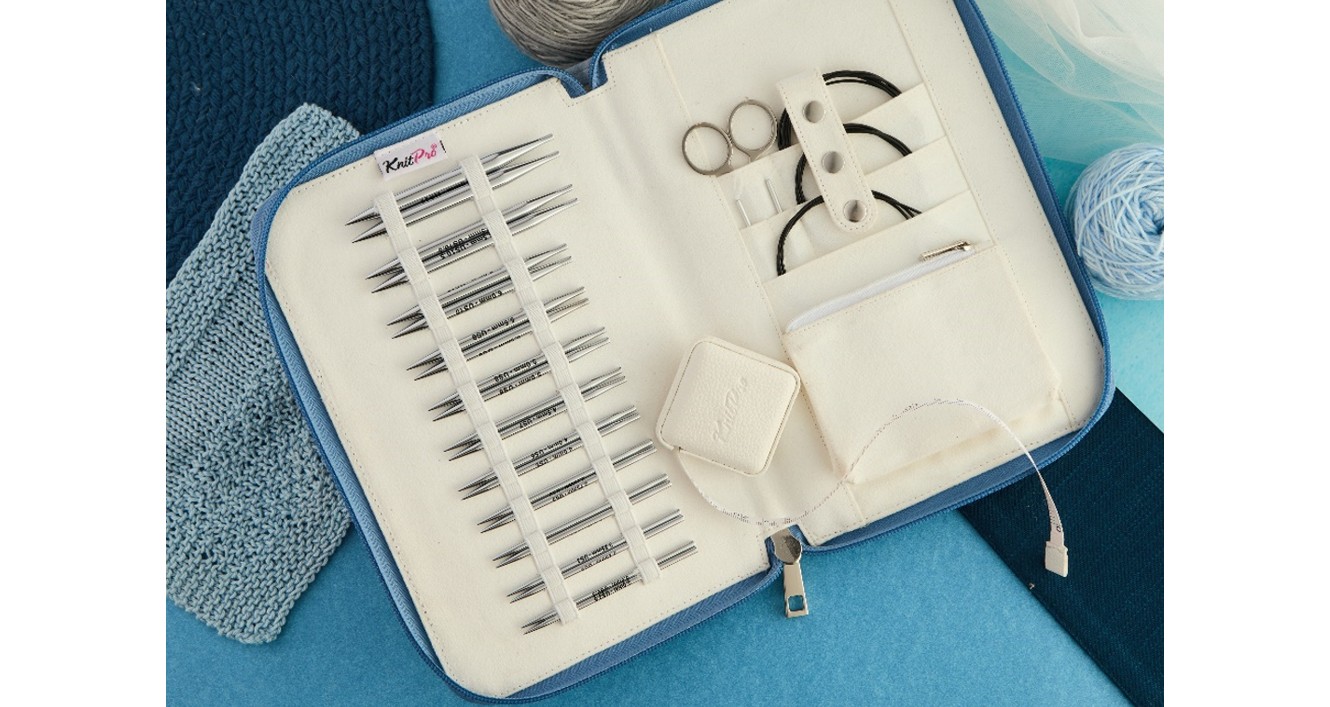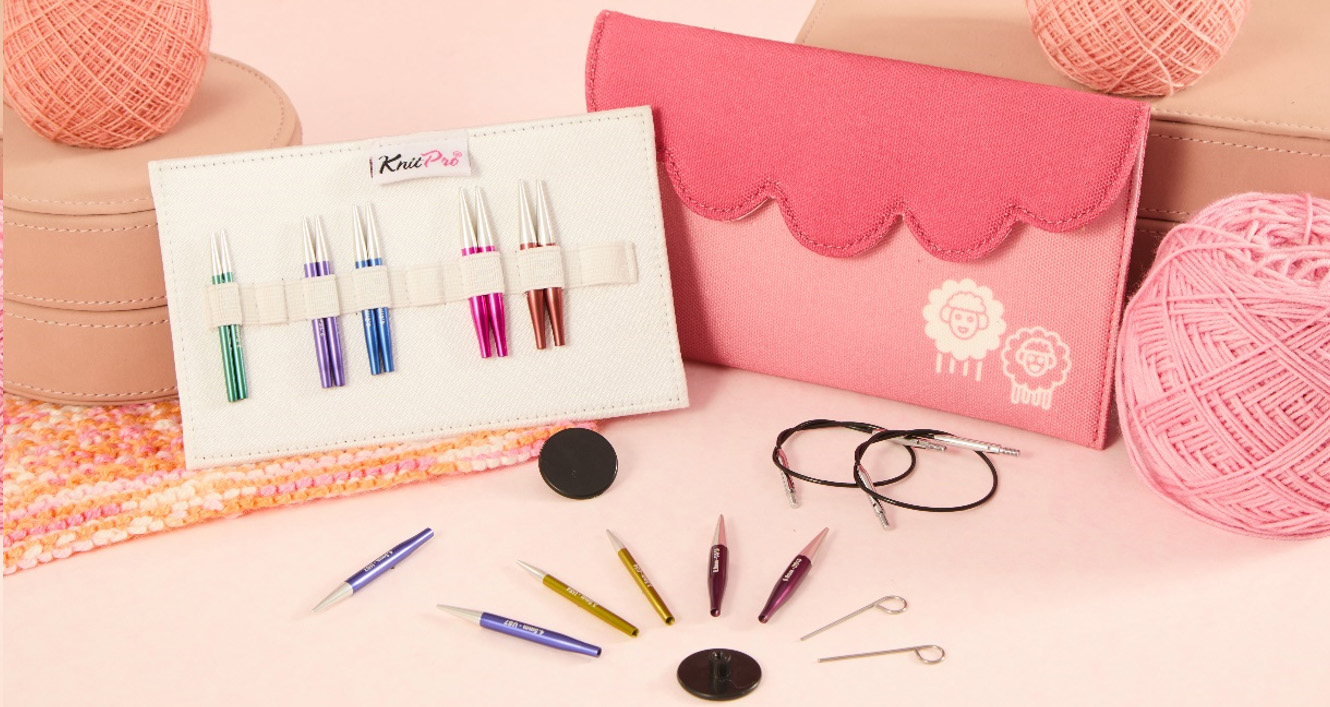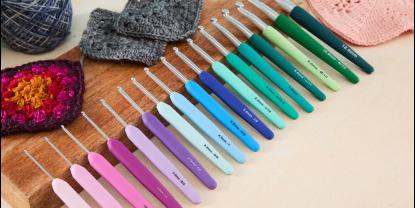Knitting a circle is a skill that every knitter must possess. This technique is quite different from knitting circular patterns which demands knitting in continuous rounds. Knitting circumferences is possible with either a set of double-pointed needles or with circular needles with the special technique of magic loop for knitting small circumferences. However, knitting a circle flat works with any knitting needles in your craft bag. It depends on the project you are working on.
Whether you're making a round coaster, a circular blanket, or even the base of a hat, the techniques for creating a perfect knitted circle provide versatility in various projects. Unlike knitting in the round, knitting a flat circle requires careful increases to maintain shape and avoid warping. In this guide, we’ll explore three ways to knit circles: the Spiral, Spoke, and Pi-shaped methods. Each of these methods offers unique styles and textures, perfect for experimenting with colorful yarns and creative .
Basic Techniques for Knitting Circles
When knitting circles, most patterns begin with a small number of stitches cast on at the center, followed by systematic increases. A common rule for circular knitting is to increase four stitches per row or eight stitches every second round to keep the circle lying flat. Strategic placement of increases determines the shape, allowing for variations like octagons, hexagons, or decagons in the circular shape. Knitting a flat circle is more of a maths problem and once you understand the formula you can easily work on your project.
1. Spiral Circle
The Spiral Circle method is commonly used for circular blankets, the backs of hats, and decorative doilies. The spiral is achieved by making increases at the start of each section or “repeat,” causing the fabric to curve either left or right, depending on the direction of the increases. This effect can be achieved with colorful yarns which enhance the spiral look with graceful color transitions.
Steps to Knit a Spiral Circle:
Go through these steps to knit a spiral circle.
Step 1 - Cast On: Start with a small number of stitches in the center (typically 8). You can choose any cast on method that works for you.
Step 2 - Place Stitch Markers: Divide your stitches evenly with markers where increases will occur.
Step 3 - Knit Increase: Make one increase at the beginning of each repeat section every round. Choose any knitting increase method according to your comfort level. You can refer to our guide on how to increase a stitch in knitting.
Step 4 - Continue Knitting: As you add more rows, the circle will naturally spiral outward.
The result is a beautiful, flowing spiral with color variations that showcase the yarn’s personality. Block the circle once finished to smooth out any slight unevenness.
2. Spoke Circle
The Spoke Circle pattern resembles a spider web, making it ideal for projects with a radial design, such as the base of bags or even Halloween decorations. This pattern is based on eight-sided shaping, where increases are made at each of the eight “spokes” every few rows, creating radiating lines that mimic spokes in a wheel. This method also pairs well with variegated yarns, where color shifts accentuate the spokes.
Steps to Knit a Spoke Circle:

Gather you knitting needles and follow the steps for a spoke circle.
Step 1 - Cast On: Begin with 8 stitches. As discussed above choose any method that works for you.
Step 2 - Increase in Spokes: Make two increases at each spoke (16 increases total) every four rounds.
Step 3 - Continue the Knitting Pattern: As you work, these increases create the spoke effect, giving the circle structure and form.
Blocking this shape is essential, as it helps the spokes lay flat and uniform. For added texture, use a yarn with high stitch definition, allowing each spoke to stand out.
3. Pi-Shaped Circle
The Pi Circle is based on the mathematical principle of Pi, where the circle’s circumference doubles as its diameter doubles. This structure is perfect for items like doilies, placemats, or shawls, where a gentle, even increase is preferred. Pi circles can be slightly more complex but offer a classic shape that lays flat, making it a popular choice for even beginners once they’re comfortable with basic increases.
Steps to Knit a Pi Circle:
Choose your favorite knitting needles and yarn while we take you through the steps.
Step 1 - Cast On: Start with 8 stitches.
Step 2 - Knit Increase Rounds:
- Knit the first round plain.
- Double the stitch count on the next round (16 stitches) and knit 2 plain rounds.
- Double again to 32 stitches, then knit 4 plain rounds.
- Double to 64 stitches and knit 8 plain rounds.
- Continue this pattern until the circle reaches your desired size.
The gradual increases create a well-balanced, symmetrical circle. Blocking will help ensure the outer edges stay smooth and prevent ruffling.
Experimenting with different yarn colors is a great way to explore each pattern's potential and add a personal touch to your projects.
Knitting a circle is a versatile skill that opens up a range of creative possibilities. With three main techniques—spiral, spoke, and Pi-shaped—you can tailor your approach to fit the style and project you have in mind.
So grab your knitting needles, pick a pattern, and start knitting circles to add a touch of handmade charm to your creations! Explore KnitPro collection for knitting needles and crafting accessories
Video Courtesy - Staci Perry | YouTube Channel - @verypinkknits












